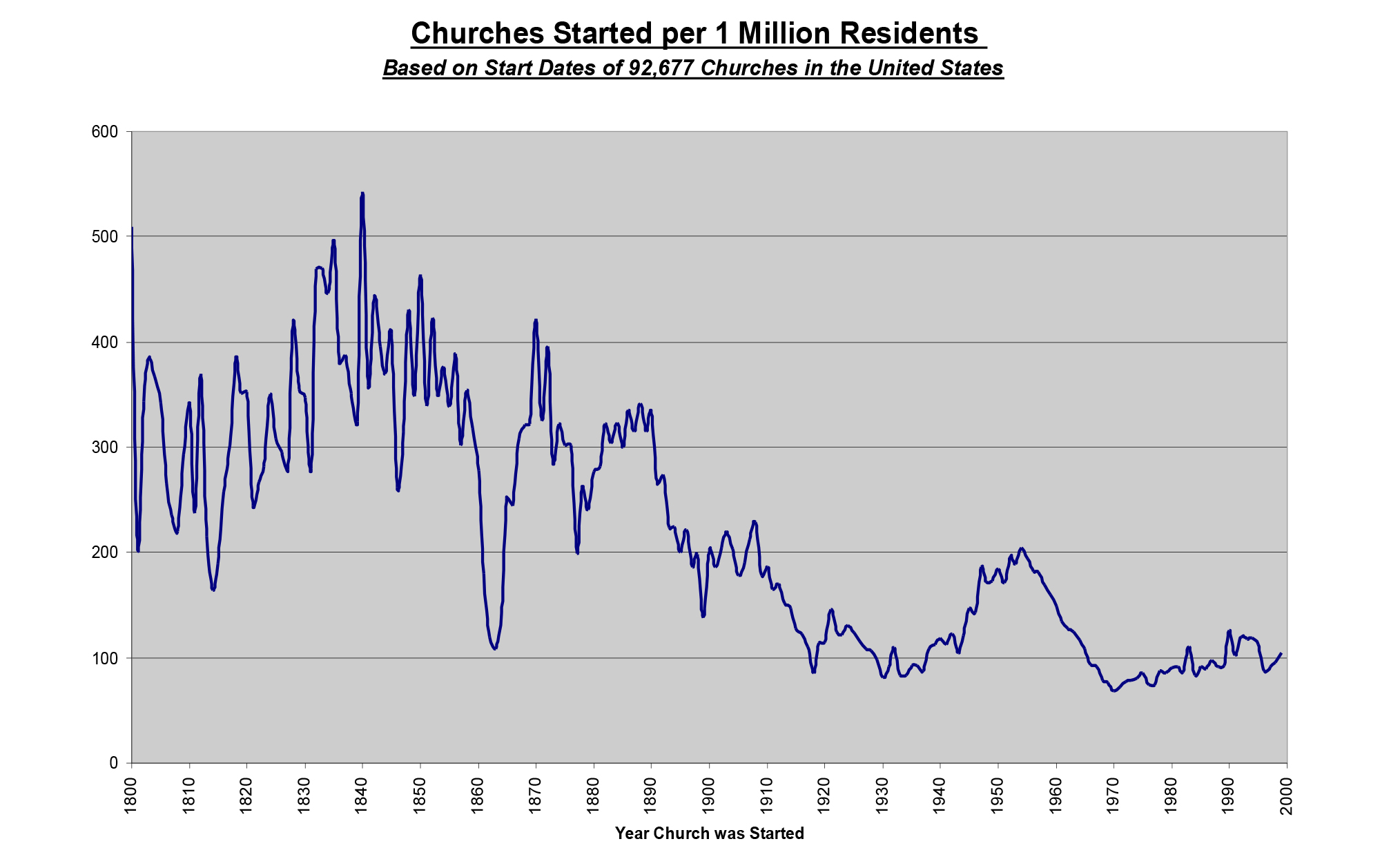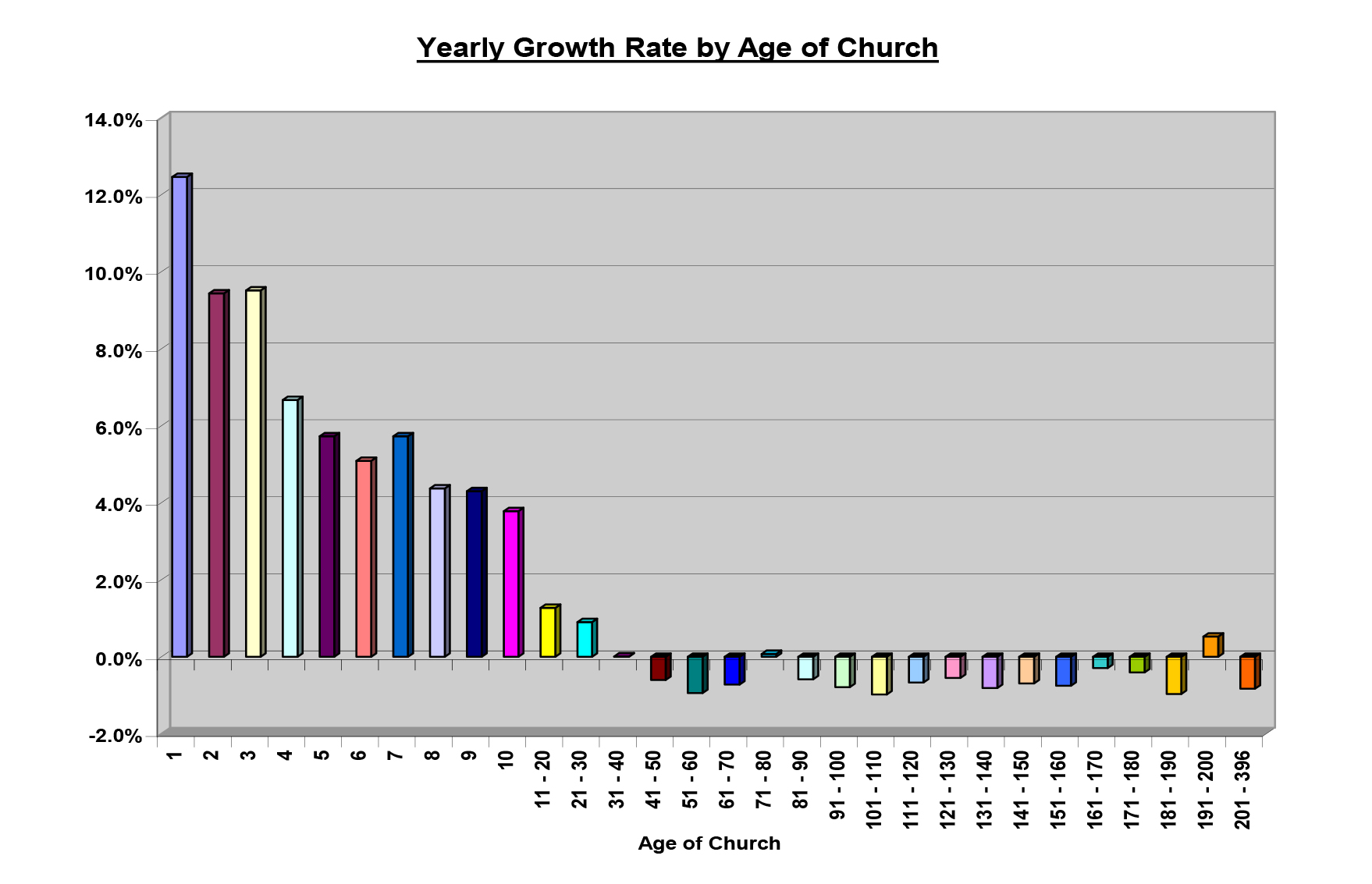The Case for Planting
 1. God is a sending God, and Jesus has sent us to plant churches.
1. God is a sending God, and Jesus has sent us to plant churches.
“As the Father has sent me, I am sending you” (John 20:21) is just one of many biblical texts that identify Christians as “sent people.” When Jesus said, “Go and make disciples of all nations, baptizing them in the name of the Father and of the Son and of the Holy Spirit” (Matthew 28:19), he was actually talking about church planting because “baptizing” in the book of Acts is consistently associated with incorporation into a body of believers. It is impossible to read the New Testament or think of the history of the Christian movement without linking it to the planting of new churches.
2. North America needs more new churches to meet the need.
Many sociologists have observed that church attendance in North America is greatly over-reported (the national average hovers around 17 percent). New churches are needed to present the timeless gospel in a new and relevant form to a new generation. For every 1,000 people in a community, it is generally accepted that one sustainable church can be planted of about 170 people (17 percent). Population projections for North America call for growth of about 50 million people between 2010 and 2030. As communities grow in number and ethnic diversity, and as churches age, decline, or die (about 12,000 close per year), it is clear that America needs many new churches.
The following graph from The American Church research illustrates historic trends in church planting and the relative need today.

3. New churches reach new people at a higher rate than established churches.
Reaching new people for Jesus Christ is a challenging task in North America today. While existing churches can be effective in this evangelistic effort, the overwhelming evidence is that new churches tend to do significantly better. Churches 15 years old or younger tend to grow faster and reach farther into the mission field than do older, more established congregations. This has led many to agree that church planting is the single most effective way to reach new people. The American Church’s research in the graph below illustrates this point.
4. Church planting is strategically smart.
In 2 Timothy 2:2, Paul presents a strategy for multiplication growth to Timothy: “The things you have heard me say in the presence of many witnesses entrust to reliable people who will also be qualified to teach others.” Growth happens exponentially when a multiplication strategy is used and church planting is the core activity in that multiplication strategy. Every time we add a new church, we multiply the potential for new disciples as we release new leaders into the harvest. Our personal experience confirms the wisdom of a multiplication strategy.
Imagine a person passing away at 90 with three children and 10 grandchildren. Compounded over time, it is easy to see how the fruitfulness of one birthing pair can easily be statistically surpassed within their own lifetime. We have all seen those wonderful family photos! When a church starts another church, it creates new DNA that is passed on to a new generation which, in turn, passes it on to another generation. That new DNA passed down through generations is the multiplying dynamic scripture teaches. The enduring testimony to this strategy is the history of every denomination in American. Apart from a church planting movement, they would not exist!
5. Church planting will revitalize a supportive parent congregation.
Church planting will usually activate passive members of your existing congregation. It is not uncommon to find people “sitting on the bench” who could serve, but they do not find a compelling reason or opportunity. When congregational leaders move out to start something new, they open positions for service and create space for people to step up and engage. Failure to move out and multiply only perpetuates a “spectator mentality” in many churches. Little wonder people drift off to other interests.
Church planting will also bring to the surface principles and practices associated with church growth that are often forgotten in established churches. Supportive parent congregations watching a new startup can learn valuable lessons about where they need to adapt and change to reach new people. This is often called the “boomerang principle.” Church planting can awaken a parent church to become “on mission” with a new level of urgency and effectiveness.
6. Church planting may reach your children…or grandchildren.
Many of us are deeply concerned for the next generation. We wonder if they will be committed to the church of their parents. The fact is, many will not.
Like us, the next generation needs to be encouraged to write a new expression of their parents’ faith. We are wise to encourage them to create a new style, a new approach, a new feel, a new incarnation of “church.” Our best emerging leaders will not just take what one generation has developed and blindly continue it. When they push away from our worship, they are not always rejecting God; they are just rejecting our “wrapper.” The best we can do is proactively put in motion the mission of God to make disciples of Jesus Christ by encouraging, supporting, and resourcing young leaders with new dreams.
It is very likely that our grandchildren will owe their spiritual formation to a future church planter. So why not promote church planting where we can today?
Every church had a beginning. Like birthing a new child, the process can be challenging and difficult. Still, birthing is natural and needed. Healthy organisms reproduce despite all the trouble and trail associated with it. In the end, it is a reason for deep joy, satisfaction, and thanksgiving!

